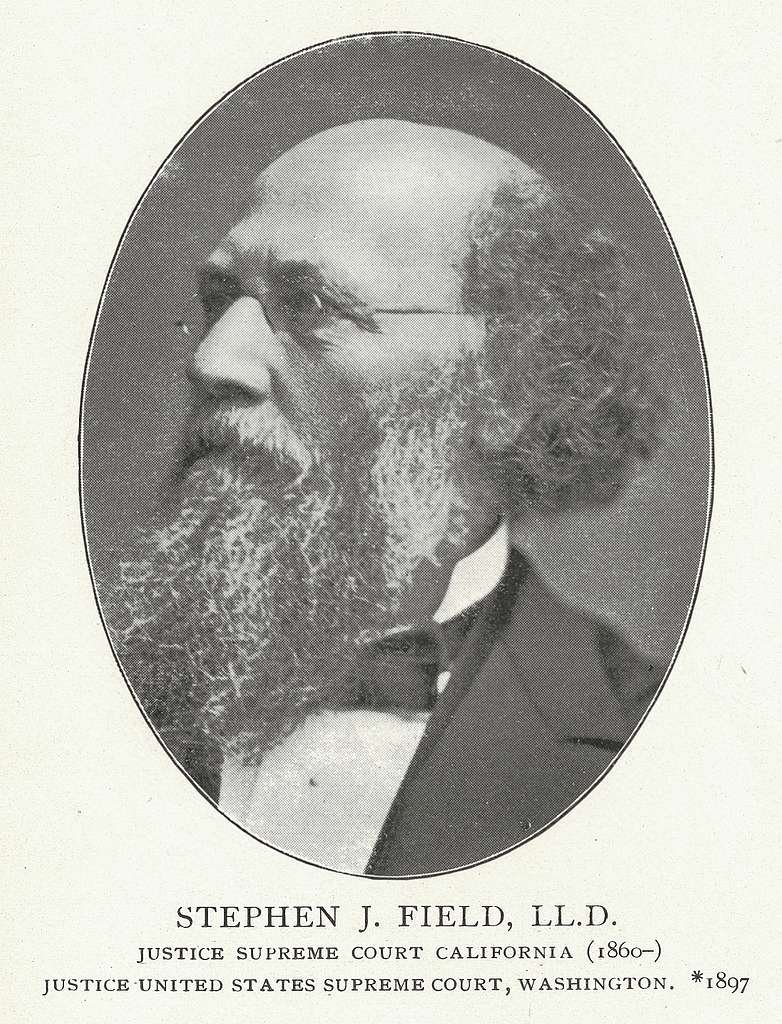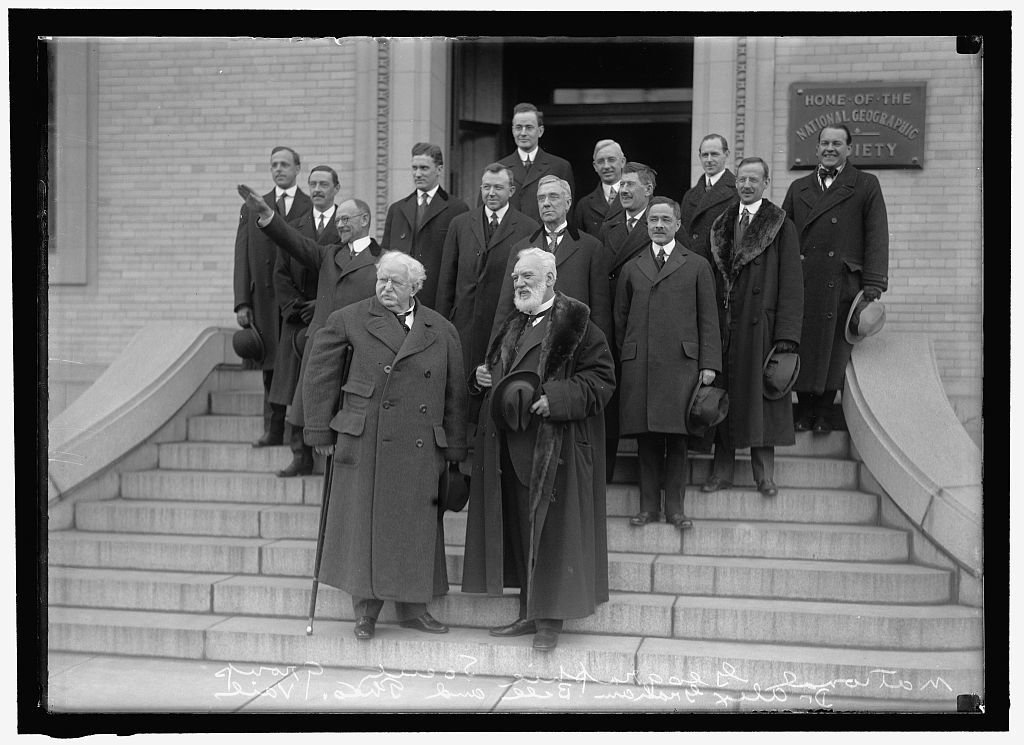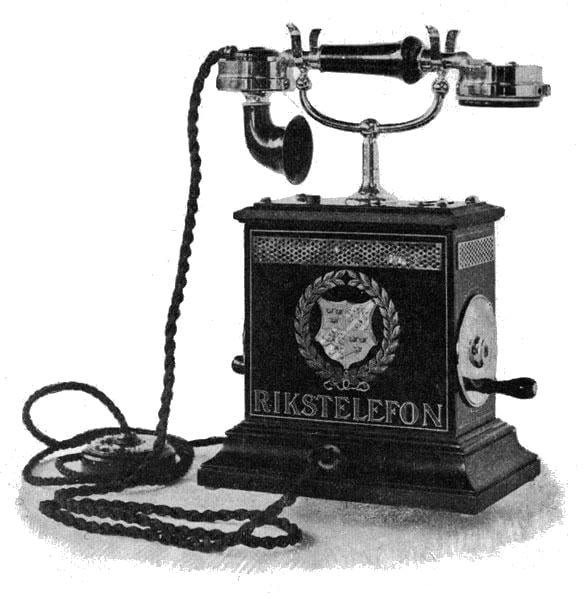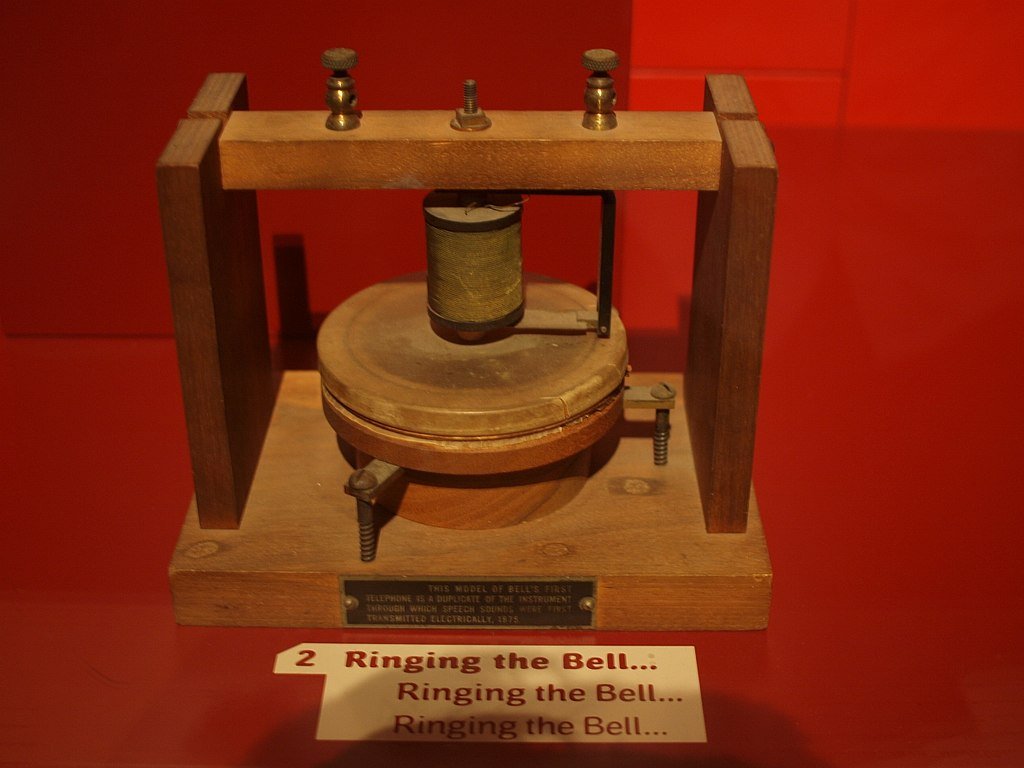In the world of technological history, the year 1915 witnessed a transformative milestone—the completion of the first transcontinental phone service in the United States. A project that began as a visionary endeavor, championed by Alexander Graham Bell and led by the American Telephone and Telegraph Company (AT&T), culminated in the establishment of a groundbreaking telecommunication link connecting the East Coast to the West Coast. This achievement, often referred to as the “First Transcontinental Railroad of the Wire,” represented a paradigm shift in the way people communicated across the vast expanse of the nation.
The genesis of this ambitious project lay in the mid-19th century, with the dream of linking the coasts through a telegraph line. The completion of the First Transcontinental Railroad in 1869 laid the groundwork for extending telecommunication infrastructure, setting the stage for the eventual realization of a transcontinental telephone line. Spearheaded by AT&T, the construction involved overcoming formidable challenges posed by diverse geographical features, from mountains and rivers to deserts. Alexander Graham Bell, a pioneering figure in telephony, played a pivotal role in shaping this endeavor, driven by a vision to create a unified network fostering seamless communication.
On January 25, 1915, the culmination of years of meticulous planning and relentless construction efforts resulted in the official completion of the transcontinental phone service. The telephone line traversed major cities, connecting New York to San Francisco and facilitating direct voice communication across the continent. This achievement revolutionized long-distance communication, ushering in a new era where businesses, government agencies, and individuals could communicate in real-time, significantly reducing the time it took to exchange information.
The impact of the first transcontinental phone service extended beyond mere technological accomplishment—it wove a tapestry of interconnectedness, fostering economic and social ties. This introduction sets the stage for an exploration of the historical significance of this monumental achievement, delving into the technological advancements, societal implications, and enduring legacy of the first transcontinental phone service.
Table of Contents
Who was the president at the first transcontinental phone call?
The first transcontinental phone call took place on January 25, 1915, and during that period, Woodrow Wilson was serving as the President of the United States. The historic call marked a significant moment in the nation’s telecommunications history, as it demonstrated the successful completion of the transcontinental telephone line, connecting the East Coast to the West Coast.
Woodrow Wilson, the 28th President of the United States, held office from 1913 to 1921. During his presidency, the country was undergoing a period of rapid technological advancements, and the completion of the transcontinental phone service was a testament to the progress made in the field of telecommunications. Wilson, a key figure during World War I, faced various domestic and international challenges during his two terms in office.
As the inaugural transcontinental call spanned the vast distance between New York and San Francisco, it symbolized not only a triumph in technological innovation but also a testament to the growing interconnectedness of the United States. The ability to communicate seamlessly across the continent had profound implications for governance, commerce, and interpersonal relationships, reshaping the way information flowed within the nation.
Who sent the first transcontinental telegraph message?

Chief Justice Stephen J. Field of the United States Supreme Court sent the first transcontinental telegraph message on October 24, 1861. This historic event marked the completion of the Western Union Telegraph Company’s first transcontinental telegraph line.
The telegraph line stretched from the telegraph station in San Francisco, California, to the one in Washington, D.C., covering a distance of nearly 3,000 miles. The completion of this ambitious project revolutionized long-distance communication, allowing for rapid transmission of messages across the continent.
Chief Justice Field’s message, chosen for its brevity, was a simple greeting: “I have the honor of being the first to announce that under the blessing of Almighty God, you will soon be in communication with the Atlantic and the Gulf of Mexico.” This symbolic and significant message highlighted the achievement of connecting the East Coast and West Coast through instantaneous telegraphic communication.
The transcontinental telegraph played a crucial role in facilitating faster and more reliable long-distance communication, contributing to the acceleration of information exchange, economic activities, and the development of the American West. Chief Justice Field’s message was a heralding moment, marking the beginning of a new era in telecommunication and connecting the nation in ways previously thought impossible.
What did Bell say to Watson?
On March 10, 1876, Alexander Graham Bell made history with the first successful telephone call. Speaking from one room to another in the same building, Bell uttered the famous words to his assistant, Thomas Watson: “Mr. Watson, come here, I want to see you.” These words, often considered the first spoken over a telephone, marked a pivotal moment in the development of telecommunications.
The circumstances surrounding this momentous occasion were rooted in Bell’s persistent experimentation with the invention of the telephone. On that day, Bell had accidentally spilled acid on himself while working on the telegraph transmitter, and he urgently called out to Watson in the next room for assistance. Watson, who was in a separate room, heard Bell’s voice through the crude telephone device and rushed to his aid.

The words exchanged between Bell and Watson not only addressed a practical need but also signaled the successful transmission of sound over a wire. This event laid the foundation for the rapid evolution of telecommunications, transforming the world and paving the way for the global communication network we take for granted today. The historical significance of that brief phrase resonates as the starting point of a communication revolution that continues to shape our interconnected world.
First Transcontinental Phone Service
The first transcontinental phone service in the United States marked a significant milestone in the history of telecommunications, connecting the East Coast to the West Coast and enabling real-time voice communication across the continent. This achievement was made possible by the completion of the transcontinental telephone line.
Here are the key details of the first transcontinental phone service:
Background
In the mid-19th century, the notion of uniting the East Coast and West Coast of the United States through a transcontinental telegraph line emerged as a visionary idea. The vast expanse of the continent presented both a challenge and an opportunity for improved communication. However, it wasn’t until the completion of the First Transcontinental Railroad in 1869 that the practical feasibility of extending telecommunication infrastructure across such a vast and diverse landscape became apparent.
The completion of the railroad marked a monumental achievement in transportation, connecting the previously distant coasts and significantly reducing travel time. This breakthrough in transportation infrastructure laid the groundwork for ambitious telecommunication projects, as the newly established railroads provided logistical support for the laying of telegraph lines alongside the tracks. The telegraph, with its ability to transmit messages over long distances at unprecedented speeds, was seen as a means to overcome the limitations of physical barriers like mountains, rivers, and deserts.
As a result, the idea of a transcontinental telegraph line gained traction, driven by the prospect of enhancing communication and connectivity across the nation. The successful completion of the First Transcontinental Railroad not only facilitated the movement of people and goods but also paved the way for advancements in telecommunication, ultimately leading to the realization of the transcontinental telegraph line, a key development in the history of American communication infrastructure.
Planning and Construction
In the late 19th century, the American Telephone and Telegraph Company (AT&T) embarked on a visionary project to create the first transcontinental telephone line, a feat that would redefine long-distance communication in the United States. Spearheaded by AT&T, a company founded by Alexander Graham Bell, the project aimed to connect the East Coast to the West Coast, realizing Bell’s dream of a unified telecommunication network.
The construction of the transcontinental telephone line was an arduous task that unfolded over vast expanses of the American landscape. Thousands of miles of telephone wire were meticulously laid, traversing challenging terrains that included imposing mountains, formidable rivers, and expansive deserts. To ensure seamless communication, relay stations were strategically established along the route, acting as crucial waypoints for the transmission of signals across the continent.
This ambitious undertaking was driven by the objective of creating a reliable and efficient communication link, fostering direct connections between major cities situated along the transcontinental route. The completion of the project in 1915 marked a historic achievement, transforming the way people communicated and reinforcing the significance of a nationwide telecommunication infrastructure. The transcontinental telephone line not only overcame geographical obstacles but also became a catalyst for economic and social integration, shaping the future of long-distance communication in the United States.
Alexander Graham Bell’s Involvement
Alexander Graham Bell, renowned as one of the primary inventors of the telephone, played a pivotal role in the development of the transcontinental telephone line, leaving an indelible mark on the evolution of telecommunication. Bell’s visionary pursuits extended beyond the invention of the telephone itself; he aspired to create a unified network that could transcend geographical boundaries and connect people across the vast expanse of the United States.
With an unwavering commitment to advancing communication technology, Bell envisioned a comprehensive network that would facilitate not only personal connections but also open avenues for business opportunities on a national scale. His foresight reflected a deep understanding of the transformative power of telecommunication in fostering social, economic, and cultural ties.
Bell’s influence was not only theoretical but practical, as he actively participated in and advocated for the realization of the transcontinental telephone line. His efforts aligned with the broader objectives of American Telephone and Telegraph Company (AT&T), marking a collaborative push toward creating a seamless telecommunication infrastructure that could transcend regional limitations.
Alexander Graham Bell‘s role in the development of the transcontinental telephone line goes beyond being an inventor; it underscores his commitment to forging connections and building a communication network that would bind the nation together, contributing significantly to the interconnected fabric of American society and commerce.
Completion

On January 25, 1915, a transformative chapter in the history of telecommunications unfolded with the official completion of the first transcontinental phone service in the United States. This ambitious project, spearheaded by the American Telephone and Telegraph Company (AT&T), connected the East Coast to the West Coast, marking a monumental achievement in the realm of long-distance communication.
The transcontinental telephone line’s route spanned from the bustling cityscape of New York to the panoramic landscapes of San Francisco, weaving its connectivity through major cities like Chicago and Denver along the way. This vast network of telephone wires overcame geographical challenges, creating a seamless link that transcended the nation’s expanse.
The significance of this endeavor was underscored by the historic moment it ushered in — direct voice communication from coast to coast became a reality. The completion of the project not only revolutionized the speed and efficiency of communication but also served as a catalyst for economic and social integration across the United States. Businesses, government entities, and individuals could now engage in real-time conversations, bridging the geographical gaps that once hindered swift information exchange. The first transcontinental phone service became a symbol of progress, transforming the way people connected and laying the foundation for the continued evolution of telecommunications technology in the years to come.
Impact
The advent of the transcontinental phone service in 1915 heralded a seismic shift in long-distance communication, fundamentally transforming the speed and reliability of interactions across the United States. Prior to this milestone, communication between the East Coast and West Coast was a protracted affair, often taking days or even weeks. The transcontinental phone service changed this paradigm, enabling real-time voice communication and reducing the time it took to convey information from coast to coast to a matter of minutes.
This newfound connectivity had profound implications for businesses, government agencies, and individuals alike. Businesses could now conduct transactions, negotiate deals, and coordinate operations with unprecedented efficiency. Government agencies found a swift and reliable means of disseminating information, enhancing coordination across the vast nation. For individuals, the ability to communicate seamlessly across the continent brought loved ones closer, facilitated quicker decision-making, and fostered a sense of unity.
Beyond the immediate conveniences, the transcontinental telephone line played a pivotal role in knitting the nation together. It became a vital conduit for economic and social ties, bridging geographical gaps and laying the foundation for a more interconnected and interdependent society. The successful implementation of this telecommunication marvel not only expedited information exchange but also laid the groundwork for future advancements that would continue to shape the landscape of modern communication.
Technological Advances
The success of the transcontinental telephone line in 1915 represented a watershed moment in the evolution of telecommunications, laying the foundation for profound advancements in technology. Its triumph paved the way for a cascade of innovations that would reshape the landscape of long-distance communication. As the first thread in the intricate tapestry of telecommunication history, this transcontinental feat demonstrated the feasibility of spanning vast distances with reliable and efficient telephone connectivity.
In the ensuing years, a relentless march of progress unfolded. Infrastructure improvements became paramount, with the expansion and fortification of the telecommunication grid. Technological innovations, spurred by the initial success of the transcontinental telephone line, propelled the industry forward. Breakthroughs in signal processing, amplification, and transmission technologies became the cornerstones of a rapidly evolving telecommunication landscape.
Simultaneously, the physical expansion of the telephone network became a strategic imperative. Networks burgeoned, connecting cities and towns across the nation. This proliferation not only democratized access to telecommunication services but also fueled economic growth, as businesses and individuals could seamlessly communicate over vast distances.
Collectively, these advancements marked a transformative era in telecommunication, catalyzed by the success of the first transcontinental telephone line. They set the stage for a future where instantaneous communication across global distances would become the norm, shaping the way societies interact, businesses operate, and information flows in the modern world.
The inauguration of the first transcontinental phone service in 1915 stands as a monumental triumph in the evolution of telecommunications. By seamlessly connecting the East Coast to the West Coast, this groundbreaking project catalyzed a paradigm shift in the way individuals, businesses, and government entities communicated across the vast expanse of the United States.
This ambitious endeavor, spearheaded by the American Telephone and Telegraph Company (AT&T) and inspired by the visionary Alexander Graham Bell, marked the culmination of years of meticulous planning and Herculean construction efforts. The completion of the transcontinental telephone line not only symbolized technological prowess but also had a profound and lasting impact on various facets of society.
In the realm of business, the newfound ability for real-time communication facilitated rapid decision-making and enhanced collaboration across geographic boundaries. Government agencies could now coordinate more efficiently, transcending the limitations of time and distance. The societal implications were equally transformative, fostering closer connections between individuals and communities.
Moreover, the success of the transcontinental phone service laid a robust foundation for future developments in long-distance communication. It paved the way for continuous advancements in telecommunication infrastructure, contributing to the interconnected world we inhabit today. The first transcontinental phone service thus stands as a pivotal moment in history, shaping the trajectory of communication and connectivity on a national scale.












